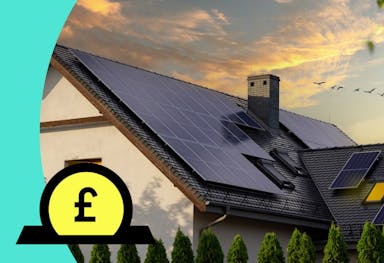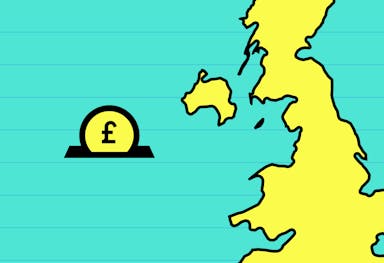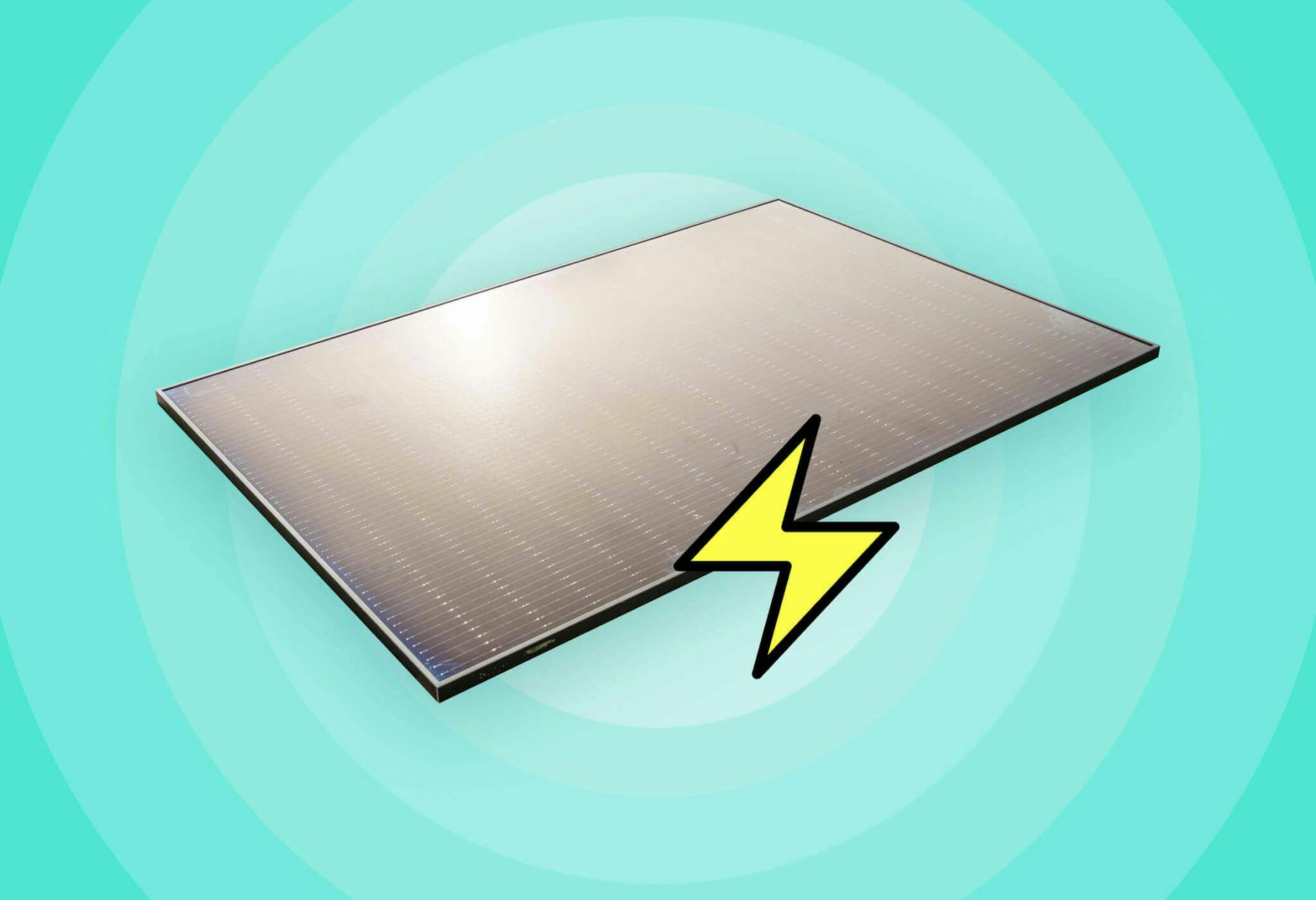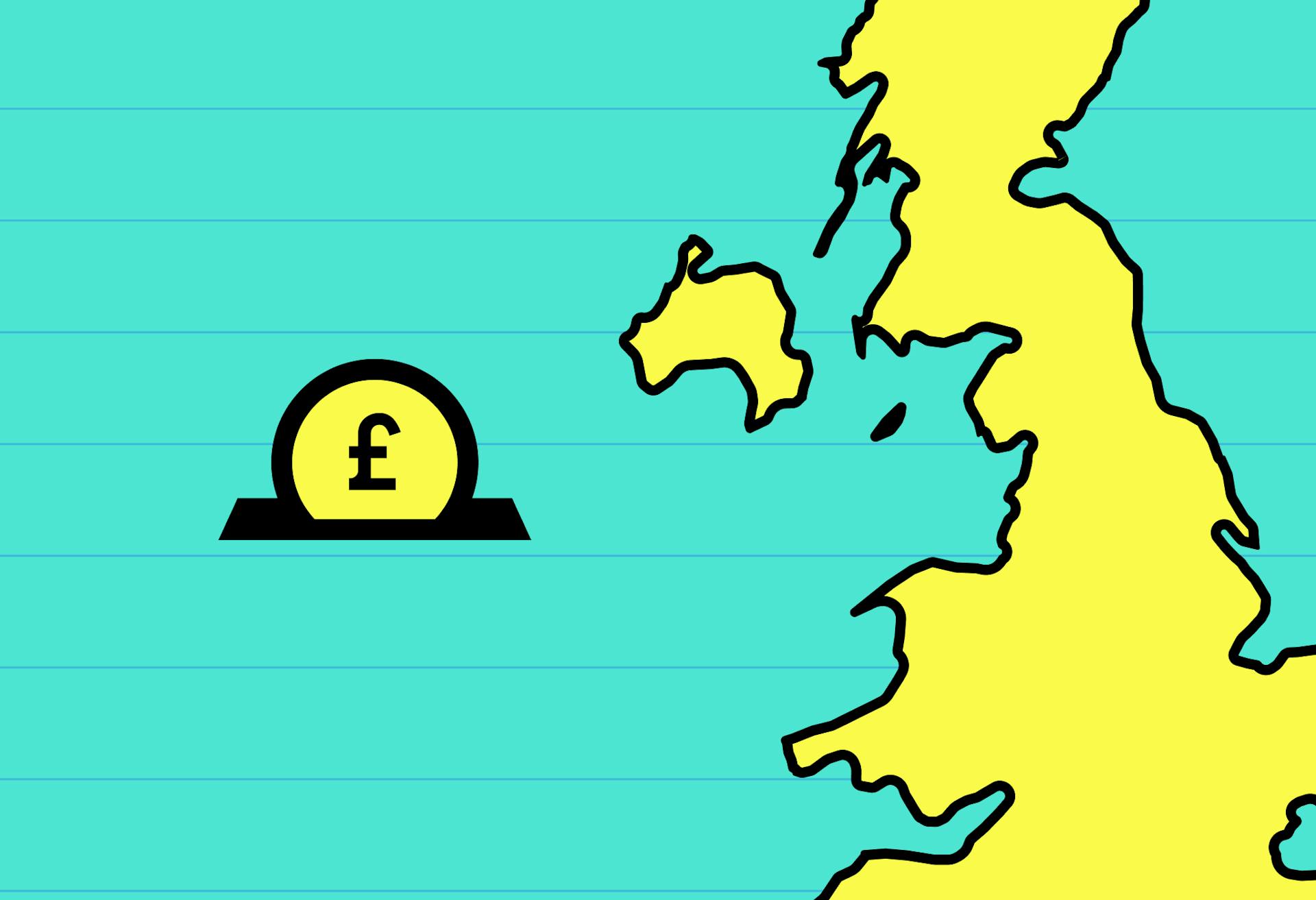- Solar advice hub
- Cities-and-regions
- Solar panels in Essex: are they worth it?
Solar panels in Essex: are they worth it?
Here's how much you can save by getting solar panels in Essex, as well as costs, grants, and how well solar works in Essex weather.


Why you can trust our content
We know that the solar industry is full of misinformation, but we only use reliable sources, including:
- Our experienced solar experts, installers and system designers
- Our own database of solar & battery system designs
- Authoritative bodies like MCS and the UK government



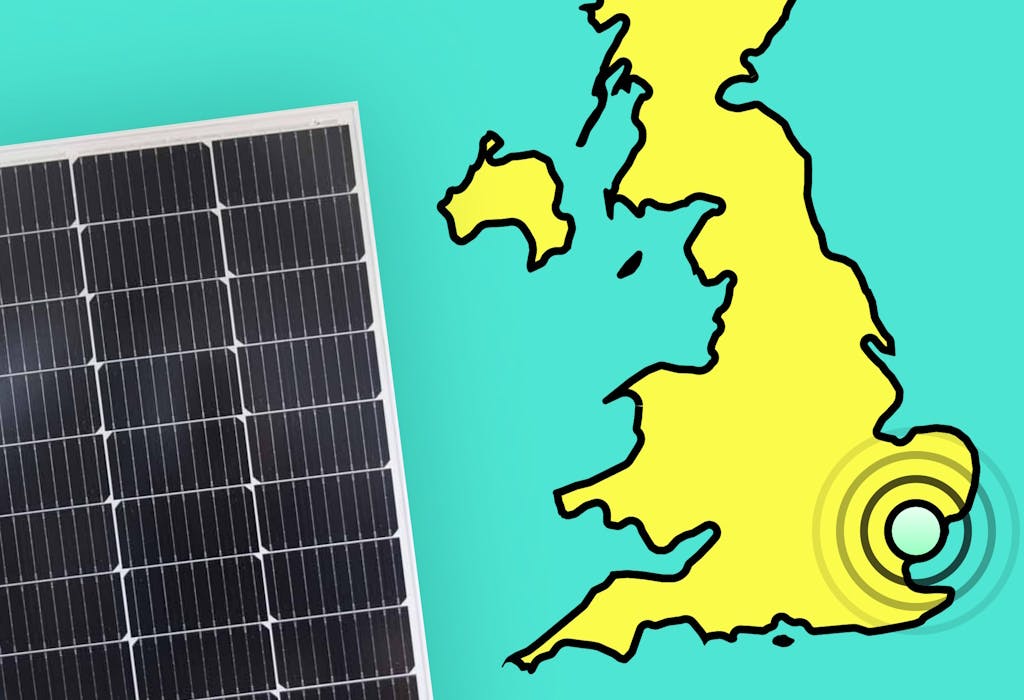
Calculate savings
What kind of home do you live in?
Calculate savings
What kind of home do you live in?
At a glance
If you live in the low-lying county of Essex and you’re looking to reduce your electricity bills, solar panels are the best decision you can make.
From Epping Forest to Tendring, Essex receives more sunlight than most areas of the UK, which means you have a distinct advantage over other counties when it comes to using solar panels.
In this guide, we’ll explain how much solar panels cost in Essex, which installers you can trust, how well they work in the county’s weather, and which government grants can help you reduce the cost.
At Sunsave we install across the whole of Essex – so if you’re wondering how much you could save with a solar & battery system, enter a few details below and we’ll provide an estimate.
Find out how much you can save
What kind of home do you live in?
What are the best solar panel installers in Essex?
| Name | Location | Founded | Customer score | Solar subscription? |
|---|---|---|---|---|
| Sunsave | Greater London | 2021 | 94% | Yes |
| Bliss Eco Energy | Southend-on-Sea | 2022 | 97.5% | No |
| The Renewable Energy Company | Brentwood | 2021 | 82% | No |
| TLC Home Group | Colchester | 2015 | 99.6% | No |
| Alternative Eco Solutions UK | Loughton | 2020 | 92% | No |
| Fresh Electrical Solutions | Basildon | 2016 | 94% | No |
| Nxt Gen Energy | Rayleigh | 2022 | 94% | No |
| Angus Renewables | Basildon | 2022 | 99.6% | No |
| Grayson Solar Installations | Grays | 2020 | 99.2% | No |
| Green Eco Group | Waltham Abbey | 2022 | 90% | No |
We’ve used a stringent series of tests to assess more than 2,200 installers across the UK, and these companies above fared the best of any in Essex.
They’re all certified by the MCS or Flexi-Orb, accredited by the HIES, approved by TrustMark, registered with NAPIT, and have received excellent customer ratings on at least one reputable review site.
The best of the best are also Which? Trusted Traders and offer a solar subscription option, though Sunsave is the only top-rated company that fulfilled the latter requirement.
To see the top companies in the country, check out our national guide to the best solar panel installers.
1. Sunsave
At Sunsave, our mission is to make solar accessible to all UK households, which is why we’re offering the UK’s first solar subscription service.
Sunsave Plus allows you to start saving on your energy bills immediately, without having to pay anything upfront.
You’ll get the best-in-class kit installed on your roof, access to the best export tariffs, and the 20-year Sunsave Guarantee, which includes 24/7 monitoring & maintenance, a free replacement battery and inverter, and downtime cover – all for a fixed monthly fee.
Your system will also be insured by Aviva against damage, fire, and theft.
2. Bliss Eco Energy
From its offices overlooking the Southend waterfront, Bliss Eco Energy has attained the approval of every top standards organisation – which is pretty impressive, considering it only started operating in 2022.
This young team of installers has also won over the group that matters most of all – its customers.
Bliss has an extremely high rating on both Trustpilot and Checkatrade, while reviewers on Google have heaped praise on managing director Dale Bliss for being friendly, communicative, and knowledgeable.
He’s not afraid of a challenge either, as shown by his willingness to install solar panels vertically, on customers’ walls.
3. The Renewable Energy Company
Founded by local businessman Prabu Serumadar in 2021, this Brentwood-based firm has earned its place in our list with its consistently professional approach to installations.
Customers speak highly about the company’s efficient, polite, hard-working installers, its no-pressure salespeople, and the way any problems were quickly resolved.
TREC uses high-quality gear supplied by the likes of Jinko, Trina, and GivEnergy, and is also well-placed to provide you with a heat pump or electric car charger, to make the most of your solar panel system.
4. TLC Home Group
TLC Home Group describes itself as “large enough to trust – small enough to care”, and this rings true.
This family-run company has an extremely impressive rating of 4.98 out of 5 on TrustATrader, based on scores of reviews from happy customers who compliment the TLC’s competence and expertise.
Its owner, Levi Draycott, started out by working for his father’s building company, before launching his own business in 2015, when he was 27.
‘TLC’ is a combination of his and his two children’s names, and the firm is embedded in the local community. It sponsors local youth football team Colchester Villa, and has completed multiple council projects.
Draycott also supports Manchester United. Try not to hold it against him.
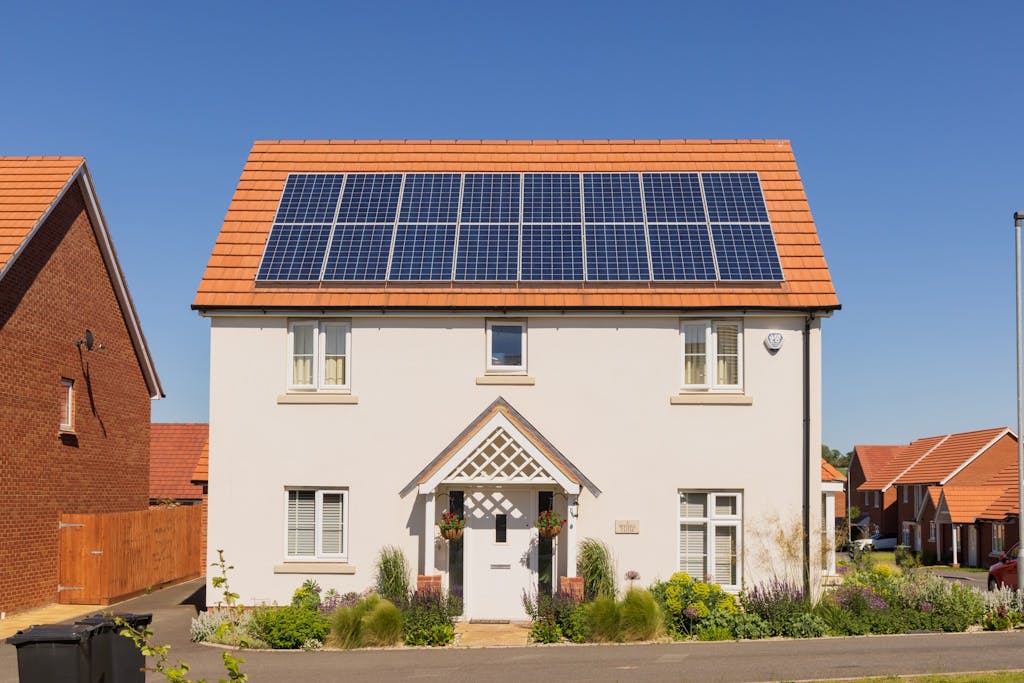
5. Alternative Eco Solutions UK
Not only does this Loughton-based company have all the accreditations you’d expect a top-tier installer to hold, it also survived launching in February 2020.
And it didn’t just outlast the pandemic – it thrived. The company has completed more than 4,000 installations since then, and has a Trustpilot rating of 4.6 out of 5.
Managing Director Thomas Lydamore wrote on LinkedIn that going from a sales job to owning his own company was “the best decision I’ve ever made. I now run my own successful company and have never looked back.”
Lydamore and fellow director Louie Taylor have built a firm that customers love, with one Trustpilot reviewer saying Taylor was “professional, well spoken and possibly made me feel the most comfortable I’ve ever felt” – which is an exceptionally glowing recommendation.
6. Fresh Electrical Solutions
Since Andrew Karlettis founded Fresh Electrical Solutions in 2016, the company has built a reputation in Essex that’s allowed it to expand beyond its local area.
More than 350 Trustpilot reviewers have left Fresh Electrical Solutions on 4.7 out of 5, which is a level of quantity and quality that would make most firms envious.
The Basildon-based business installs top-tier solar panels made by the likes of QCells and Meyer Burger, all while being punctual, efficient, and informative, according to customers.
7. Nxt Gen Energy
In 2022, after establishing a foothold in the scaffolding and insulation industries, co-owners Sam Barr and Christopher Day expanded into solar.
It’s been a roaring success. The firm has installed solar panels on countless homes, leisure centres, park homes, and schools, attracting rave reviews along the way.
NXTGEN won the Exceptional Customer Satisfaction Award at the 2024 Clean Energy Awards, and has given back to the community too, for instance by donating to the Thurrock Foodbank.
Barr told Sunsave: “It means a lot to us being selected as one the top 10 solar installers in Essex.
“This has only been made possible by the amazing team we’ve built, all working collectively to ensure the customer experience is second to none.
“We have an extremely knowledgeable sales team that tailor every quotation to suit the customers needs, ensuring the best returns possible for their investment.”
8. Angus Renewables
This company relies on word of mouth and local advertisements to get new customers, and it’s worked a treat – largely because of the way Angus Renewables operates.
Customers repeatedly compliment the installer for its helpful, responsive, and trustworthy approach to jobs, allowing Angus to achieve a near-perfect Checkatrade rating.
Owner Matthew Angus has continually driven his business to new heights, and in 2024, his firm won the Lifetime Achievement in Clean Energy award.
Business Awards UK said the company “has made substantial, long-term contributions to the industry … their commitment to ethical business practices and customer-centric solutions significantly enriches the renewable energy landscape.”
The company also helps energy suppliers to comply with ECO4, one of the main solar panel grants that helps disadvantaged households to get energy-efficient measures.
9. Grayson Solar Installations
Connor Wood founded Grayson – based in Grays – in 2020, and has used his experience in the sector to build an excellent company.
Wood has explained on his LinkedIn: “After spending 10 years dedicated to the electrical industry, gaining as many qualifications as I could along the way, I saw the renewable energy market as an opportunity to apply my knowledge and further my skills.”
The business has dozens of reviews on Trustpilot, Checkatrade, and Google – rather than hundreds – but across all three sites, it has a near-perfect rating.
It also relies on first-rate brands like Canadian Solar, Trina, JA Solar.
10. Green Eco Group
Local boys Aaron Hundal and Tarren Dhariwal run this Waltham Abbey-based business, which has grown steadily since launching in 2022.
As well as partnering with reputable brands such as JA Solar, Trina, QCells, and LONGi, Green Eco Group has also worked to provide outstanding customer service.
Reviewers have praised the team for communicating in a direct, transparent manner, and for the aftercare they’ve received.
The company promises that it’ll be available 24/7 to deal with queries from customers, and it seems like this approach has paid off.
How much do solar panels cost in Essex?
| Property size | System size (kWp) | Number of panels (450W) | Estimated cost |
|---|---|---|---|
| 1 bedroom | 2.25 | 5 | £7,743 |
| 2-3 bedrooms | 4.5 | 10 | £11,307 |
| 4-5 bedrooms | 6.75 | 15 | £15,460 |
A 4.5kWp solar & battery system typically costs £11,307 to buy and install in Essex.
This includes 10 solar panels, each with a 450-watt peak power rating, and a 5kWh battery.
The price of your specific solar panel system will vary according to several factors including its size, the installation’s complexity, and which installer you choose.
To find out everything else you need to know, check out our guide to solar panel costs.
Find out how much you can save
What kind of home do you live in?
How many homes in Essex have solar panels?
36,085 homes in Essex have solar panels which are certified by the Microgeneration Certification Scheme (MCS), as of January 2024.
Across the county’s 12 councils and two unitary authorities, that means 4.7% of all households have installed solar panels.
This figure is slightly above the national average of 4.5% – as it should be, since Essex is sunnier than most of the UK.
As this county-wide total only includes Microgeneration Certification Scheme-certified installations, the real number of homes with solar panels in Essex is likely slightly higher.
For more solar energy statistics about the UK and further afield, read our guide.
| Local authority | Homes with solar panels | % of homes with solar panels |
|---|---|---|
| Basildon | 2,355 | 3.08% |
| Braintree | 3,228 | 4.97% |
| Brentwood | 1,049 | 3.25% |
| Castle Point | 1,346 | 3.6% |
| Chelmsford | 3,716 | 4.93% |
| Colchester | 7,280 | 9.13% |
| Epping Forest | 1,532 | 2.81% |
| Harlow | 1,016 | 2.68% |
| Maldon | 1,859 | 6.66% |
| Rochford | 1,729 | 4.86% |
| Southend-on-Sea | 2,177 | 2.78% |
| Tendring | 3,999 | 5.92% |
| Thurrock | 2,156 | 3.25% |
| Uttlesford | 2,643 | 7.14% |
| Total: 36,085 | Average: 4.7% |
Are there any grants for solar panels in Essex?
There are solar panel grants for a variety of households in Essex, as well as schemes that can help you dramatically reduce the upfront cost.
If you’re not eligible for these initiatives but still can’t afford the price of solar panels, check out Sunsave Plus, which is available at no upfront cost.
For fixed monthly payments over 20 years, you’ll receive the best-in-class kit, full monitoring and maintenance support, and a system that’ll save you money from day one.
Solar Together Essex
Solar Together is a scheme that helps residents in a specific area secure a sizable discount on their solar installations through collective buying.
In Essex, more than 6,600 signed up during the 2023 edition of the scheme, which is the fourth time it’s taken place in the county.
This record-breaking number of households collectively achieved an average discount of 32%, which equates to thousands of pounds in upfront savings.
You can take part in Solar Together if you’re a homeowner, small or medium-sized business owner, or tenant – as long as you have your landlord's permission.
It only runs for a limited time in each county – so watch out for when it comes back to Essex.
National grants
If you qualify for these nationwide government grants, you should definitely consider applying.
Solar panels can cut your electricity bills by hundreds of pounds per year, massively reduce your carbon footprint, and potentially increase your property’s value.
Home Upgrade Grant
The Home Upgrade Grant supports the installation of energy-efficient improvements in low-income households that aren’t on the gas grid and have an Energy Performance Certificate (EPC) of D, E, F, or G.
If you’re eligible, you could get discounted or free solar panels.
All 14 of Essex’s councils and unitary authorities were successful in their applications for the second part of the scheme, which lasts until March 2025.
They were all included in Cambridgeshire and Peterborough Combined Authority’s £82.3 million award, so if you live in Essex, you can apply. Just contact your local authority.
Basildon Council was also separately awarded £1.6 million, which means it has a bit more funding to hand out.
Energy Company Obligation (ECO4)
You can access the government’s primary project for reducing home emissions if you live in a low-income or vulnerable household with residents on at least one from a list of benefits.
Rather than a grant, ECO4 is a way for the government to compel large energy suppliers to make energy-efficient improvements in struggling households, at no cost to the inhabitants.
ECO4 can help you to get a free solar panel system, though only if your property is heated with electricity, just like 10.9% of households in England , 11% in Scotland , and 7.5% in Wales.
Is Essex sunny enough for solar panels?
Essex gets markedly more sunlight than most of the UK, with the level of solar irradiance in the county coming in at 19% higher than the UK average.
For instance, the County Hall in Chelmsford enjoys 1,304 kilowatt-hours per square metre (kWh/m²) on average, each year. This figure will vary slightly across the county, but it’s a pretty good indicator.
'Kilowatt-hours per square metre' refers to how much energy is travelling from the sun, across 93 million miles of space, to a specific square metre on Earth.
These figures are taken from the European Commission's Photovoltaic Geographical Information System, which measures solar irradiance according to the latest weather trends.
When it comes to solar panel output there are a number of factors which affect how much energy they produce, but solar irradiance is a big one.
As you may expect, the more intense the sunlight that hits your panels, the higher the watts per square metre, and the more solar power your installation will produce – which allows you to make more savings on your electricity bills.
How much power can a solar panel system generate in Essex?
A solar panel system can generate enough electricity in Essex to cover the majority of your annual usage, enabling you to reduce your electricity bills by more than half.
We designed the system below for a home in Colchester that consumes 3,919 kilowatt-hours (kWh) of electricity per year.
| Location | System size (kWp) | Battery size (kWh) | Average output per year (kWh) | Consumption (kWh) |
|---|---|---|---|---|
| Colchester | 4.73 | 5.2 | 4,128 | 3,919 |
This system involves 11 solar panels which all have a power rating of 430 watts (W), creating a 4.73kWp (kilowatt-peak) system – that is, an installation which produces 4,730kWh per year in standard test conditions, which includes a solar irradiance of 1,000 W per m².
As Colchester is relatively sunny, the system would produce 4,128kWh per year, which is 87% of what the system is expected to generate under standard test conditions.
This is more than the 3,919kWh which the household consumes each year – and since our design includes a 5.2kWh battery, the inhabitants will be able to use 2,353kWh of their own solar electricity, which covers 60% of their total usage.
The remaining 1,775kWh would go to the grid through a smart export tariff called Intelligent Octopus Flux – one of the best export tariffs around.
Please note: you won’t necessarily generate as much solar electricity with your system, as this design is for a specific property that may be different to yours – but it should give you a rough idea of what’s possible in Essex.
Is it worth getting solar panels in Essex?
It’s absolutely worth getting solar panels in Essex, in the great majority of cases.
The county enjoys good levels of solar irradiance from Epping Forest to Tendring, which means you’ll usually save hundreds of pounds on your electricity bills.
After all, there’s a reason why 4.7% of households in Essex have chosen to get solar panels.
If you’re put off by the upfront cost, you could look into Solar Together, ECO4, or the Home Upgrade Grant, all of which can reduce the price.
If you’re not eligible for a grant, you should consider Sunsave Plus, our all-in-one residential solar and battery solution that’s tailored to your home, and delivered as a monthly subscription at no upfront cost.
It also comes with 24/7 monitoring and maintenance, free replacement parts, downtime cover, and insurance.
And if you’re interested in how much you could save with a solar & battery system from an installer that covers the whole of Essex, enter a few details below and we’ll generate a quick estimate.
Find out how much you can save
What kind of home do you live in?
Solar panels in Essex: FAQs
Related articles

Written byJosh Jackman
Josh has written about the rapid rise of home solar for the past six years. His data-driven work has been featured in United Nations and World Health Organisation documents, as well as publications including The Eco Experts, Financial Times, The Independent, The Telegraph, The Times, and The Sun. Josh has also been interviewed as a renewables expert on BBC One’s Rip-Off Britain, ITV1’s Tonight show, and BBC Radio 4 and 5.
